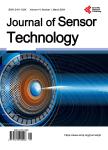Retro-Reflective Fiber Optic Displacement Sensor for Performance Optimization Using Taguchi Method
Retro-Reflective Fiber Optic Displacement Sensor for Performance Optimization Using Taguchi Method作者机构:Department of Electronic Science Abasaheb Garware College Pune Maharashtra India Department of Electronic Science Savitribai Phule Pune University Pune Maharashtra India
出 版 物:《Journal of Sensor Technology》 (传感技术(英文))
年 卷 期:2020年第10卷第1期
页 面:1-13页
学科分类:080901[工学-物理电子学] 0809[工学-电子科学与技术(可授工学、理学学位)] 08[工学] 080401[工学-精密仪器及机械] 0804[工学-仪器科学与技术] 0803[工学-光学工程]
主 题:Retroreflective Fiber Optic Sensor Taguchi Method Optimization of Sensor Geometry
摘 要:Fiber optic displacement sensors are widely used in industry. Retro reflective fiber optic displacement sensor consists of parallel fibers with a reflector at a distance. Light is launched into the transmitting fiber which gets reflected by reflector. This reflected light is collected by the receiving fiber. The received light is function of the displacement of the reflector from the fiber end faces. This paper is targeted to obtain a robust design for the fiber optic displacement sensor (FODS) using well known Taguchi method. The design takes care of all noise parameters within constraints of manufacturing tolerances. The statistical data analysis is performed on the simulated results. The larger the better signal to noise quality characteristics is used to find the effect of control parameters in the data analysis. Taguchi analysis suggests dominant parameters, which affects the sensitivity of the FODS and causes immunity to noise. A source fiber inclination angle is chosen as an adjustment parameter. Other control parameters are used for fine tuning of the FODS design for achieving three qualities viz. best robustness, optimized sensitivity and robustness and best sensitivity.



